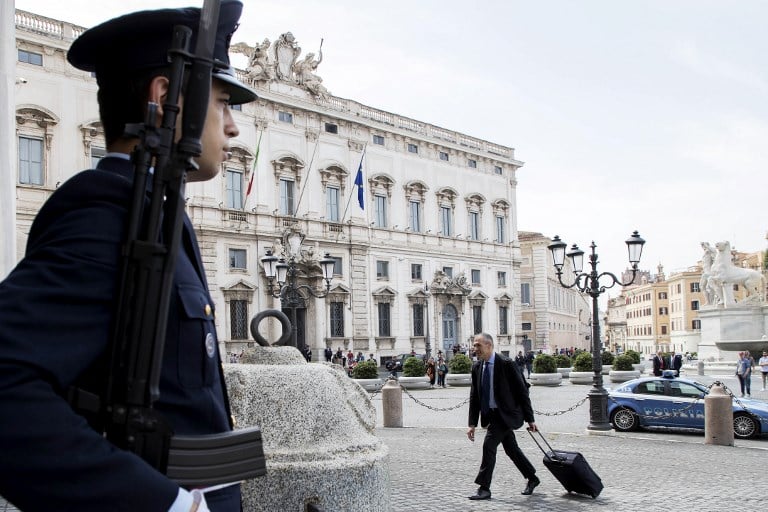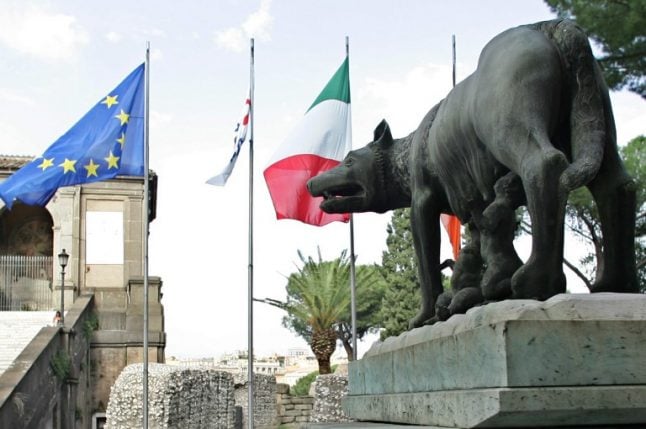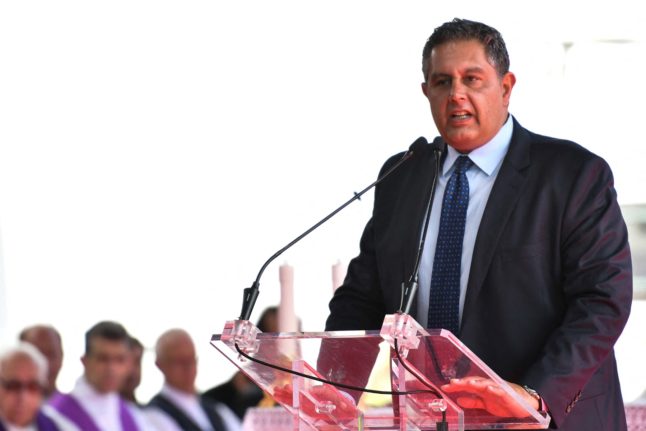Depending on who you listen to, President Sergio Mattarella is either the hero or the villain of Italy's latest drama.
The head of state has faced everything from calls for his impeachment to threats of violence since populist parties' efforts to form a government collapsed over Mattarella's refusal to accept their nominee for finance minister, an anti-euro economist who the president said was not consistent with Italy's national interests nor the alliance's own published programme.
The president's actions are based on a single article in the Italian constitution, Article 92, which reads:
“The Government of the Republic is made up of the President of the Council and the Ministers who together form the Council of Ministers. The President of the Republic appoints the President of the Council of Ministers and, on his proposal, the Ministers.”
It sounds innocuous enough, but the key is the detail: the prime minister proposes a cabinet, the president appoints one.
- RECAP: How did Italy end up in political crisis?
- Who is Carlo Cottarelli, the technocrat set to be Italy's next PM?
- Who is Sergio Mattarella, Italy's 'political referee'?
The article has been the subject of fierce debate over the past few days, but most constitutional experts seem to agree that if Article 92 gives the president the right to appoint ministers, it also gives him the right not to appoint them.
That's certainly how it's been interpreted on at least three other occasions in the past 24 years: in 2014, Mattarella's predecessor, Giorgio Napolitano, opposed the Democratic Party's first choice of Justice Minister because, it was widely speculated, he disagreed with his approach. In 2001 President Carlo Azeglio Ciampi put the kibosh on the appointment of a League stalwart to the Ministry of Justice since he once resisted an official search of the party's premises, and in 1994 President Oscar Luigi Scalfaro prevented Silvio Berlusconi from installing his personal lawyer in the same post.
None of those interventions caused the collapse of the entire proposed cabinet, however, because in each case the parties put forward an alternative – even if the disputed nominee was simply shifted to a different portfolio. Yet according to Mattarella, the Five Star Movement (M5S) and the League proved “unwilling to opt for any other solution”.
READ MORE: Here's how Italy's president explains his controversial veto
With that in mind, it seems unlikely that those calling for Mattarella's impeachment would have much luck. It is possible to impeach an Italian president, but only under certain conditions:
“The President of the Republic is not responsible for the actions performed in the exercise of presidential duties, except in the case of high treason or violation of the Constitution.
“In such cases, the President may be impeached by Parliament in joint session, with an absolute majority of its members.”
So says Article 90. Even if the president's critics could somehow make the case that he had committed treason or violated the constitution, they'd need the support of more than half of all legislators. That would only be reachable if practically every member of the Five Star Movement and the League agreed to vote together, which, given the questionable nature of the case against Mattarella, seems hard to guarantee.
READ MORE: How likely is impeachment of the Italian president?
So what about the caretaker cabinet that Mattarella ordered put in place instead? On that, let's turn to Article 94:
“The Government must receive the confidence of both Houses of Parliament. Each House grants or withdraws its confidence through a reasoned motion voted on by roll-call. Within ten days of its formation the Government shall come before Parliament to obtain confidence.
“An opposing vote by one or both the Houses against a Government proposal does not entail the obligation to resign. A motion of no-confidence must be signed by at least one-tenth of the members of the House and cannot be debated earlier than three days from its presentation.”
In other words, the interim government formed by Carlo Cottarelli on Mattarella's instruction must swiftly seek the approval of both the Chamber of Deputies and the Senate.
In both houses, the M5S and the League have the seats between them to make a majority. But even if they vote against Cottarelli's caretaker cabinet, as they're widely expected to, he won't have to step down right away. As Cottarelli has already said, in that case he'll steer the country through the summer recess to the autumn, asking for new elections “after August”.
READ MORE: How much power does the Italian president actually have?
But, according to the constutition once more, the duty of dissolving parliament and triggering a new vote is Mattarella's. Article 88 reads:
“In consultation with the presiding officers of Parliament, the President may dissolve one or both Houses of Parliament.”
Previous presidents have exercised this power with or without the full assent of parliament: mostly recently in 2011, in the depths of the financial crisis, when President Napolitano supported a move to oust then prime minister Berlusconi and replace him with technocrat Mario Monti. Berlusconi denounced what he said was a state coup and demanded early elections, but without success.
READ MORE: What's next for Italy after proposed populist government collapses?

Italy's interim prime minister, Carlo Cottarrelli. Photo: Francesco Ammendola/Ufficio Stampa Presidenza della Repubblica/AFP



 Please whitelist us to continue reading.
Please whitelist us to continue reading.